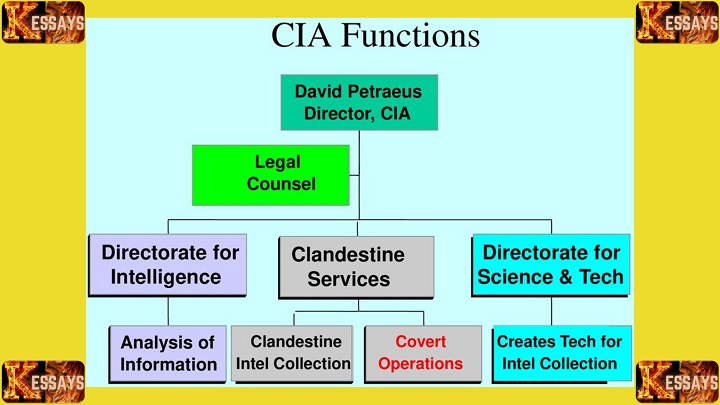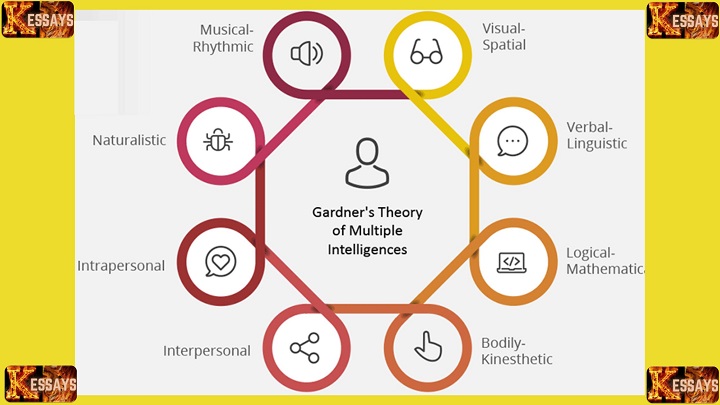Introduction:
Intelligence plays a critical role in ensuring the safety and security of nations. It is valuable in identifying potential threats, evaluating risks, and formulating strategies to safeguard national interests. This article explores intelligence's multifaceted role in national security and military operations, highlighting its significance in various contexts.
I. The Role of Intelligence in National Security:
A. Threat Assessment and Early Warning Systems:
- Monitoring and analyzing external threats to the nation's security.
- Gathering intelligence on potential adversaries, hostile states, and terrorist organizations.
- Tracking the activities of foreign intelligence agencies that may pose a risk to national security.
- Assessing the capabilities and intentions of foreign military forces.
- Monitoring geopolitical developments and potential conflicts in different regions.
- Analyzing economic and trade-related risks that may impact national security.
- Studying emerging technologies and their potential impact on national defense.
- Monitoring cyber threats from foreign actors and hackers.
- Evaluating the risk of weapons proliferation and non-state actors obtaining advanced weaponry.
- Identifying internal security risks, such as extremist groups, radicalization trends, and domestic threats.
- Analyzing social and political factors that may contribute to internal instability.
- Assessing the resilience of critical infrastructure and vulnerabilities that could be exploited by adversaries.
- Identifying potential risks from foreign intelligence activities targeting the country's economy, research, and technology.
- Monitoring the movement of illicit materials that could be used for terrorist activities or illegal actions.
- Anticipating potential cyberattacks on government systems, critical infrastructure, and private sectors.
- Collaborating with international intelligence partners to gather and share relevant threat information.
- Providing early warning alerts to decision-makers and relevant agencies based on intelligence analysis.
- Recommending appropriate security measures and response actions to mitigate identified threats.
- Conducting continuous assessments and updates to adapt to evolving threats and security challenges.
- Enhancing preparedness and response capabilities through intelligence-driven training and exercises.
B. Countering Terrorism and Organized Crime:
- Gathering intelligence on terrorist networks, their leadership, and operatives.
- Monitoring online activities and communication channels used by extremist groups.
- Infiltrating terrorist organizations with human intelligence sources to gather critical information.
- Identifying and analyzing patterns of recruitment and radicalization within the population.
- Tracking the movement and activities of known terrorists to prevent potential attacks.
- Conducting surveillance on suspected terrorist cells and individuals to assess their intentions.
- Gathering intelligence on the financing and funding sources of terrorist activities.
- Collaborating with international intelligence agencies to share information on global terrorist networks.
- Utilizing signals intelligence (SIGINT) to intercept and decode communication among terrorists.
- Employing imagery intelligence (IMINT) to monitor terrorist training camps and hideouts.
- Disrupting criminal organizations through intelligence-led operations.
- Infiltrating criminal networks to gather information on their operations, hierarchy, and activities.
- Gathering intelligence on drug trafficking routes, smuggling networks, and money laundering activities.
- Using human intelligence (HUMINT) to penetrate criminal organizations and obtain actionable information.
- Utilizing technology and data analysis to identify criminal patterns and modus operandi.
- Collaborating with law enforcement agencies to coordinate operations against organized crime.
- Sharing intelligence with international partners to combat transnational criminal networks.
- Conducting financial intelligence investigations to track and freeze criminal assets.
- Employing open-source intelligence (OSINT) to gather information on criminal activities from public sources.
- Developing strategies based on intelligence assessments to dismantle criminal networks effectively.

C. Border Security and Immigration Control:
- Monitoring cross-border movements to detect and track potential security threats.
- Gathering intelligence on criminal organizations involved in human trafficking and smuggling.
- Utilizing technology, such as surveillance cameras and drones, to monitor border areas effectively.
- Employing geospatial intelligence (GEOINT) to analyze border landscapes and potential infiltration routes.
- Collecting human intelligence (HUMINT) from informants and sources near border regions.
- Identifying and tracking illegal border crossings and their modus operandi.
- Collaborating with neighboring countries to share intelligence on cross-border criminal activities.
- Utilizing signals intelligence (SIGINT) to intercept communication among human traffickers and smugglers.
- Analyzing patterns of illegal immigration and smuggling to anticipate future movements.
- Conducting risk assessments to identify vulnerable areas and potential security gaps.
- Gathering intelligence on the activities of transnational criminal organizations involved in immigration-related crimes.
- Developing intelligence-led operations to apprehend human traffickers and smugglers.
- Sharing intelligence with law enforcement agencies to coordinate efforts in tackling border security issues.
- Using biometric and identity verification technologies to screen individuals at border checkpoints.
- Employing data analytics to identify trends in illegal immigration and improve border security strategies.
- Leveraging open-source intelligence (OSINT) to monitor online platforms used by human traffickers and smugglers.
- Conducting joint operations with immigration and customs authorities to enhance border security.
- Providing intelligence support for border control agents to make informed decisions during their operations.
- Collaborating with international partners to gather intelligence on transnational immigration networks.
- Continuously updating intelligence assessments to adapt to changing migration patterns and security challenges.
D. Cybersecurity and Information Warfare:
- Detecting cyber threats and attacks on national information infrastructure.
- Monitoring and analyzing network traffic and data logs to identify potential intrusions.
- Gathering intelligence on cyber adversaries, their capabilities, and tactics.
- Utilizing cyber threat intelligence to understand the latest attack vectors and malware trends.
- Collaborating with cybersecurity agencies and private organizations to share threat intelligence.
- Conducting proactive vulnerability assessments to identify potential weaknesses in systems and networks.
- Employing intrusion detection systems and advanced threat analytics to detect anomalous behavior.
- Utilizing signals intelligence (SIGINT) to intercept and analyze cyber communications of potential threats.
- Conducting cyber threat hunting to actively search for signs of malicious activity in networks.
- Sharing cyber threat intelligence with international partners to combat global cyber threats.
- Developing and implementing incident response plans based on intelligence assessments.
- Utilizing open-source intelligence (OSINT) to monitor public forums and hacker communities for potential threats.
- Conducting intelligence-led cyber operations to disrupt and neutralize cyber adversaries.
- Protecting critical national information infrastructure from cyber attacks and data breaches.
- Utilizing geospatial intelligence (GEOINT) to identify physical locations of cyber attackers.
- Conducting cyber threat assessments to evaluate the risks posed to national security.
- Collaborating with the private sector and academia to leverage their expertise in cybersecurity.
- Conducting cyber threat intelligence sharing with industry-specific information sharing centers.
- Employing threat intelligence platforms and tools to automate and enhance cyber threat analysis.
- Continuously improving cybersecurity measures based on intelligence-driven insights and lessons learned.
II. The Role of Intelligence in Military Operations:
A. Situational Awareness:
-
Real-time Intelligence for Decision-making:
- Gathering and analyzing real-time information to make informed decisions during military operations.
- Providing commanders with up-to-date data on enemy movements, troop positions, and battlefield conditions.
- Monitoring unfolding events and developments to adjust strategies as needed.
-
Battlefield Intelligence and Surveillance:
- Conducting reconnaissance and surveillance missions to gather intelligence on enemy forces and activities.
- Deploying reconnaissance units, drones, satellites, and other surveillance technologies to monitor enemy movements.
- Identifying potential threats and opportunities on the battlefield to gain a tactical advantage.
- Gathering intelligence on enemy fortifications, defenses, and supply lines to plan effective military maneuvers.
B. Targeting and Precision Strikes:
-
Identifying High-Value Targets (HVTs):
- Gathering intelligence to identify and locate high-value enemy targets, such as key leaders, commanders, and strategic assets.
- Analyzing communication intercepts, human intelligence reports, and other sources to pinpoint HVTs' whereabouts.
- Prioritizing targets based on their potential impact on the enemy's capabilities and the overall mission objectives.
-
Minimizing Collateral Damage:
- Using intelligence to assess potential risks to civilian populations and non-combatants in target areas.
- Analyzing data on the proximity of critical infrastructure, hospitals, schools, and residential areas to the intended targets.
- Employing precision-guided munitions and advanced targeting systems to minimize the risk of unintended casualties.
- Conducting rigorous pre-strike assessments to verify the target's identity and significance to avoid hitting non-military assets.
C. Force Protection and Risk Mitigation:
-
Intelligence Support for Troop Safety:
- Providing intelligence to military units about potential threats and hazards in their operational areas.
- Alerting troops to the presence of enemy forces, ambush points, and hostile territories.
- Furnishing information on local insurgent groups, improvised explosive devices (IEDs), and other dangers.
- Offering real-time updates on enemy movements to enhance troops' situational awareness.
-
Assessing Operational Risks:
- Conducting risk assessments based on intelligence to evaluate the feasibility and potential outcomes of military operations.
- Analyzing terrain, weather conditions, and logistical challenges to determine the operational risks.
- Identifying potential threats and vulnerabilities that could compromise the success of a mission.
- Evaluating the capabilities of enemy forces and their potential responses to specific military actions.
D. Planning and Strategy Development:
-
Long-term Military Planning:
- Utilizing intelligence to forecast potential future threats and challenges.
- Analyzing geopolitical trends and changes in the global security landscape.
- Assessing the capabilities of potential adversaries and their military strategies.
- Identifying emerging technologies and potential asymmetric threats.
-
Intelligence in War Gaming and Scenario Building:
- Using intelligence to create realistic scenarios for military exercises and war games.
- Evaluating various outcomes and responses based on different intelligence inputs.
- Assisting in the development of contingency plans for various operational situations.
- Incorporating intelligence assessments into war gaming simulations to improve preparedness.
III. Roles of Economic Intelligence:
-
Assessing Economic Threats and Opportunities:
- Gathering intelligence on economic trends, market developments, and financial risks.
- Analyzing foreign economic policies and activities that may impact the nation's economic interests.
- Identifying potential economic threats, such as trade barriers, sanctions, and currency fluctuations.
- Evaluating opportunities for investment, trade partnerships, and economic growth.
-
Supporting Trade Negotiations:
- Providing intelligence to support government negotiators in trade deals and agreements.
- Offering insights into the economic strengths and weaknesses of negotiating partners.
- Analyzing the potential impact of trade agreements on various sectors of the economy.
- Assessing the trade practices and policies of other nations to inform negotiation strategies.

IV. Roles of Diplomatic Intelligence:
A. Providing Insights for Diplomatic Efforts:
- Gathering intelligence on the political and strategic intentions of foreign governments.
- Analyzing the positions and interests of other countries in international relations.
- Identifying potential areas of cooperation and contention between nations.
- Offering insights into the cultural, social, and historical contexts of foreign countries.
B. Enhancing International Relations:
- Using intelligence to foster constructive dialogues and strengthen diplomatic ties.
- Providing diplomatic missions with valuable information to facilitate negotiations.
- Assisting in understanding the motivations and priorities of foreign governments.
- Supporting diplomatic efforts to resolve conflicts and promote peace.
V. Roles of Counterintelligence:
A. Detecting and Neutralizing Foreign Espionage:
- Identifying and monitoring foreign intelligence activities targeting the nation's government, military, and industries.
- Conducting investigations to uncover potential moles or spies within national agencies and organizations.
- Counteracting covert attempts by foreign intelligence services to infiltrate and gather classified information.
- Disrupting espionage networks and covert operations through intelligence-led operations.
B. Protecting Sensitive Information:
- Safeguarding classified and sensitive data from unauthorized access and leaks.
- Implementing robust security protocols to protect against cyberattacks and information breaches.
- Conducting security clearance screenings for personnel with access to sensitive information.
- Utilizing signals intelligence (SIGINT) to monitor and detect potential breaches of classified communications.
VI. Roles of Environmental and Geospatial Intelligence:
A. Monitoring Environmental Threats:
- Utilizing geospatial intelligence (GEOINT) to monitor and analyze environmental hazards.
- Tracking natural disasters such as hurricanes, earthquakes, tsunamis, and wildfires.
- Assessing the impact of climate change on vulnerable regions and military operations.
- Providing early warning and situational awareness for disaster response and humanitarian aid efforts.
B. Mapping and Surveillance:
- Conducting geospatial mapping to create detailed and accurate maps of various terrains.
- Utilizing aerial and satellite imagery for reconnaissance and surveillance purposes.
- Monitoring border regions and critical infrastructure to enhance security and border control.
- Tracking the movement and activities of potential adversaries and monitoring their military installations.
VII. Roles of Human Intelligence (HUMINT):
A. Gathering Intelligence from Human Sources:
- Recruiting and handling human intelligence sources (HUMINT sources) to gather critical information.
- Conducting confidential interviews and debriefings with individuals possessing valuable insights.
- Infiltrating and running agents within targeted organizations, groups, or foreign governments.
- Collecting firsthand information on adversary activities, intentions, and capabilities.
B. Understanding Cultural and Societal Dynamics:
- Utilizing human intelligence to comprehend the cultural, social, and societal nuances of foreign nations.
- Enhancing cross-cultural understanding to support diplomatic and military operations.
- Analyzing human behaviors, belief systems, and value structures in various regions.
- Assessing public sentiment, local attitudes, and potential reactions to political and military actions.
VII. Roles of Signals Intelligence (SIGINT):
A. Intercepting and Decoding Communication Signals:
- Gathering intelligence by intercepting and analyzing communication signals, such as radio, satellite, and internet transmissions.
- Decoding encrypted messages and communications to extract valuable information.
- Monitoring electronic signals to identify patterns, trends, and potential threats.
B. Electronic Warfare Support:
- Supporting electronic warfare operations by disrupting and deceiving enemy communication systems.
- Intercepting and jamming enemy signals to hinder their command and control capabilities.
- Conducting electronic countermeasures to protect friendly communication and radar systems.
- Utilizing signals intelligence to identify and exploit vulnerabilities in enemy electronic systems.
IX. Imagery Intelligence (IMINT):
A. Analyzing Satellite and Aerial Imagery:
- Utilizing satellite and aerial imagery to gather intelligence on enemy activities and locations.
- Analyzing images to identify military assets, troop movements, and potential threats.
- Monitoring changes in infrastructure, installations, and facilities that may indicate shifts in enemy capabilities.
B. Cartographic Support:
- Providing cartographic support by creating detailed maps and geographic information.
- Incorporating IMINT data into maps to enhance military planning and decision-making.
- Offering geographic intelligence for navigation, route planning, and operational purposes.
X. Open-Source Intelligence (OSINT):
A. Utilizing Publicly Available Information:
- Gathering intelligence from publicly accessible sources, including news articles, government reports, academic papers, and websites.
- Monitoring open-source data to track developments in various regions and industries.
- Utilizing OSINT to complement classified intelligence and provide a broader perspective on global events.
B. Social Media Analysis:
- Monitoring and analyzing social media platforms to gather intelligence on public sentiment, events, and trends.
- Identifying potential security threats, social movements, and emerging issues through social media analysis.
- Utilizing geolocation data and user-generated content to track events and activities in real-time.
XI. Technological Intelligence:
A. Monitoring Emerging Technologies:
- Tracking and analyzing developments in emerging technologies with potential military or security applications.
- Gathering intelligence on advancements in fields such as artificial intelligence, cyber capabilities, biotechnology, and space technology.
- Identifying innovative technologies that could enhance national defense or security capabilities.
B. Assessing Potential Threats from Technological Advancements:
- Evaluating the implications of new technologies in the context of national security and defense strategies.
- Assessing potential threats posed by the proliferation of advanced weaponry or disruptive technologies.
- Analyzing the impact of technological developments on traditional military doctrines and strategies.

Conclusion
Intelligence plays a central role in maintaining national security and enhancing military capabilities. From assessing threats and preventing attacks to enabling precision military operations and supporting diplomatic efforts, intelligence provides invaluable insights for decision-makers. As the world evolves, so do the challenges, and intelligence continues to adapt and innovate to safeguard nations from an ever-changing array of threats.



Comments are closed!